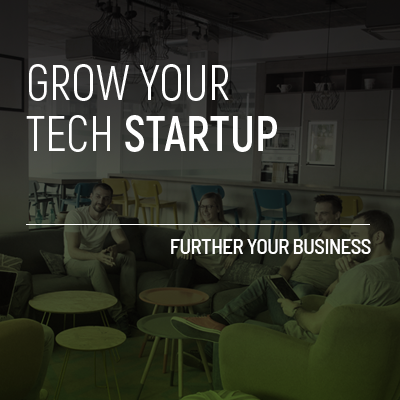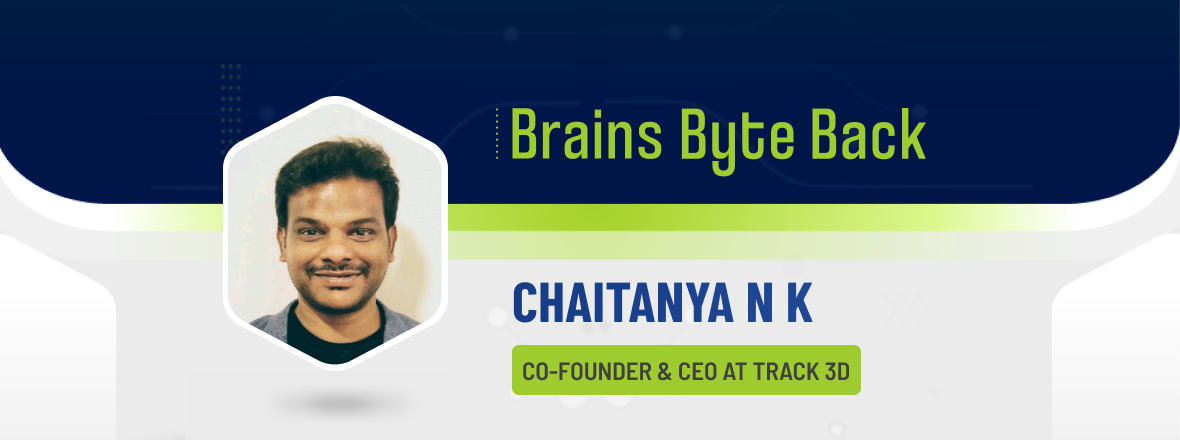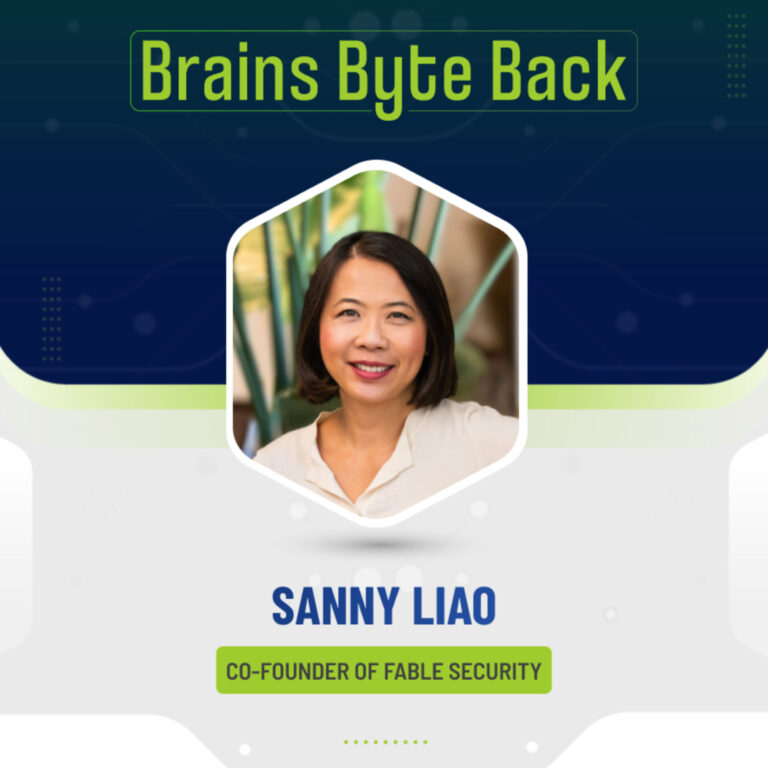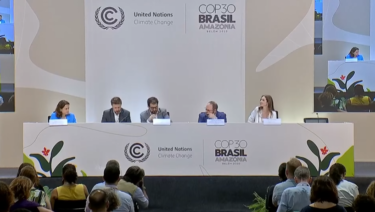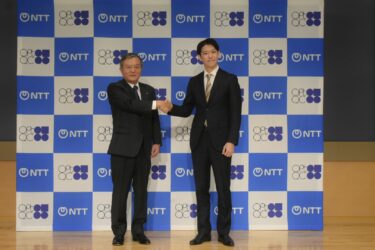Construction is one of the world’s largest and oldest industries, yet it continues to struggle with delays, cost overruns, and outdated methods of tracking progress. In this episode of Brains Byte Back, we sit down with NK, co-founder and VEO of Track3D, who explains how his team found an efficient way to bring live, accurate visibility to job sites.
Instead of relying on manual progress reports that are often unreliable and susceptible to human error, contractors can simply walk a site with a camera—whether a phone, drone, or 360 device. The images captured are stitched together into a measurable 3D model. Without having to physically visit a job site, stakeholders can see what has been built, where it stands against design, and whether the project is meeting the designated timeline. As NK put it, the goal is to give clear answers without adding complexity.
His journey to construction didn’t begin with him picking up a hammer. For over 18 years, NK has worked in fields ranging from wearable tech to smart cities, from IoT to robotics. The unifying theme was closing the gap between the physical and digital worlds. A fascination with 2D drawings to 3D imagery.
While building digital replicas for city-scale projects, he and his co-founder noticed that construction sites faced the same challenge of too much manual reporting, not enough objective data. That discovery became the seed for his current venture.
When asked about the industry’s reputation for resisting new technology, NK offers a different perspective. He argues that construction isn’t hostile to digital tools, but rather underserved. Most offerings have been too slow, too expensive, or too difficult to adopt at scale. This is what makes AI and our current technological revolution so exciting for the industry.
According to NK, the solutions that succeed will be those that are simple, fast, accurate, and affordable. Looking into the future, NK believes augmented reality and robotics will become common tools on job sites, only when they meet those same criteria.
Erick takes the opportunity to ask NK about his thoughts on how the U.S AI action plan will serve his industry. He highlights the push for faster expansion of data centers, critical for running advanced AI systems, and believes the plan directly feeds into construction demand and accelerates the rollout of practical tools that can be used now.
For other founders trying to bring advanced tools into traditional industries, NK’s advice is simple: spend time on site, observe real problems, and treat technology as the support system, not the hero.
You can listen to the full episode on Spotify, Anchor, Apple Podcasts, Breaker, Google Podcasts, Stitcher, Overcast, Listen Notes, PodBean, and Radio Public.
Find out more about NK here.
Learn more about Track3D here.
Reach out to today’s host, Erick Espinosa – [email protected]
Get the latest on tech news – https://sociable.co/
Leave an iTunes review – https://rb.gy/ampk26Follow us on your favourite podcast platform – https://link.chtbl.com/rN3x4ecY
Transcript:
NK: My name, it could be quite a mouthful. It’s Krishna Chaitanya Naredla. And NK are my initials, Naredla Chaitanya NK. And that’s what my friends, family, everyone I never know calls me. So no one knows Chaitanya as such. And also, I track 3D. I’m the CEO and co-founder of the company. It’s been three and a half years since we started it. Three co-founders and been working on this since a long time now, actually.
And just to tell you a bit of a context on what Track 3D is all about, right? So, Track 3D is automating construction monitoring. So, whatever happens on site today, if you ask, are we on track? You’ll get very subjective answers. So, Track 3D automates that with computer vision. Any moving camera, even with a person walking with a camera, they create a 3D replica of it so that we can quantify and qualify everything that’s installed on site. Like, what’s the progress? Are we on track? How are we doing with respect to design? How exactly things are getting installed and where? Track 3D simplifies these problems by giving you very easy answers to this and very objective answers.
Erick Espinosa: NK, I just want to start off by thanking you for joining me on this episode of Brains Byte Back. I just want to mention, I noticed that you refer to yourself as kind of like a startup enthusiast. In your background, basically, you’ve worked across a lot of different fields of technology, AI, robotics, IoT. But before we dive into the future of tech and construction, because I understand that’s what your focus is right now, I’d like to start with your story. Can you tell us a little bit about what first drew you into the startup space in general?
NK: Absolutely, Eric. This could be a long-winded answer, so bear with me. But I have been doing this for more than 18 years now. So, I have personally been fascinated by how we are trying to understand our physical world. And that’s where the genesis of all technology started. So, for far too long, our world is in 3D, right? It’s multi-dimensional, 3D predominantly. But we are trying to understand it in 2Ds. A picture is a two-dimension. A blueprint is a 2D representation of a building. So, that is what I could never fathom. I could never understand myself. Like, looking at a 2D drawing, I cannot understand the building as such. Or looking at a picture, measuring something was always difficult for me. So, very early on, I started working on these technologies. I haven’t been very fortunate enough to get the early view into how these technologies have evolved.
It has been different domains, different startups. I started out in the medical domain. We were doing neuro-rehabilitation when we started. So, we are creating digital scans of people and putting them in virtual worlds. All that to home automation, industrial automation, where we are creating replicas of homes, industries. And even at a personal level, when we are doing smart wearables, we wanted to track and measure everything, how you would actually do in your physical world. So, that led to our last startup, which was in the world of smart cities.
Smart cities, in fact, all the three co-founders actually got together in the last startup and we were about creating digital replicas of city scale. And that’s how we got also introduced into the world of construction. So, as you see, right, the common theme has been how do we bridge the divide between the physical and the digital worlds, so that you can better understand, take better decisions and, you know, overall increase the productivity as such.
Now, that with the smart city project that we were doing, right, cities do a lot of construction. And that’s how we got introduced into the world of construction as well, because even cities had this problem. Are we on track? How much work has happened? All these were questions where no one would get the right answers to. We believe that, you know, having our expertise in technology and the way we look at the world may help solve that divide or bridge that divide. So, that led to the genesis of Track 3D.
Erick Espinosa: Well, when I really think about it, I feel like 3D has always kind of been part of our lives. It’s been a technology, I think that’s existed for quite some time, but really in the form of entertainment, when you think about it, when people go to movie theaters, it isn’t something that people really incorporated in terms of our everyday life. I guess, what made you kind of figure out there was a gap or a problem specifically in construction that made you think that, you know, 3D would be really valuable at this point in time?
NK: Right. And again, the genesis of the problem which I talked about came from smart cities. And this was a large capital city being built in India from the ground up, where people wanted to monitor everything that’s happening on a day-to-day basis so that they can better solve problems. But when we went on site over there, and then even in the US, multiple sites that I visited, I found out that, you know, everything that happens on the job site is predominantly reported manually.
Now, manually reported data is either inaccurate, incomplete, inaccessible, or inconsistent. So the stakeholders of the project, right, never got the right information at the right time to take the right decisions. And we believe that, you know, a real-time 3D replica of your site can actually solve that problem. Now, to do this right, the technology had to be super simple. So what we did is, you know, use a camera, a 360 camera, a drone, a mobile doesn’t matter, just walk the site. And the entire technology brilliance that came in was, how are we able to create a really accurate, measurable 3D model or 3D replica of this live site condition.
So 3D, if you would imagine, right, you go into graphics, you go into media, and all of that. But think about our physical world again, right, this isn’t 3D, but a picture, you lose the dimensions of it, you’re not able to measure of a picture. But imagine a series of pictures that you take of the same physical space, and imagine stitching them together into measurable, accurate 3D. Then you now have AI that can actually quantify and qualify everything, which was not initially possible. So that led to the formation of that is where we believed we could create majority impact.
Erick Espinosa: So how does that work exactly? Like, I guess, in terms of somebody’s interested in this technology, are you going to the site using the technology to kind of draw that 3D image for them? Like, because I imagine it would be like, I mean, you would need the assist, the most intimidating part would be grabbing those images, knowing that they’re doing it effectively, right? Like, how does that work exactly?
NK: No, on the contrary, you know, for this technology to scale, we couldn’t be on so many sites, right? So we took some deliberate design choices. Number one, it has to be hardware agnostic, it can work on any hardware. What I mean by that is, you know, all we require is a moving camera. And a moving camera could be a drone, it could be a robot, it could be a 360 camera, or it could be a mobile phone with a person on site actually walking on it. So just hold the phone and walk along with it, enough. The camera passively records the information. And this data is sent, captured via our application, obviously, but sent to our platform, where the actual magic happens.
The magic of stitching all this imagery together to form that super accurate 3D model. Now, most of our cases, or most of our partners are construction companies, like either owners, most cases, general contractors or subcontractors. These are the people who actually do the capture for us. So you don’t need any training, anything specific as such, use an app, connect a camera, walk. It’s as simple as that. Now, after you walk and collect this data, what happens? That is where the magic happens.
Erick Espinosa: It sounds pretty simple enough. And now I imagine that you’ve been in this construction field for quite some time. So I want to talk a little bit about tech itself and where it’s heading specifically in construction. And because you have experience in like multiple frontiers of technology, what do you think is the most immediate impact on construction in the next few years? And I’m talking in relation to AI, robotics, IoT, like I feel like they all have, you know, obviously a level of influence. But what do you think is that primary technology people are looking at right now for the next few years?
NK: Got it. So I have a little bit of a contrarian view on this one, Eric. And the view is this, right? Construction doesn’t have a good reputation, right? When it comes to digitization and adopting new technologies. When we originally came from India, we also thought that might have been the case. But as we were talking to more and more people, we realized that is not the case at all. This is not a tech-averse industry by any means. In fact, people like tech. People use so much technology. There’s so many siloed applications that exist in construction that I doubt exist in other industries.
But then, you know, the problem statement is about why hasn’t any technology seen real mass scale adoption, right? There have been robotics, AI, IoT, all of these technologies. And the answer to that is not the mindset of people. It is the solutions itself. The technology itself that exists today, due to whatever factors, right, hardware being costly, software not being there enough, AI not being mature enough, whatever be the reason, I don’t think that there was a solution which was simple, fast, accurate, and cost-effective enough. I think these are the four things that will drive, you know, adoption of a product in not only construction, right, in any field, but construction more so.
So, people want to solve today’s problems. They want to build a building, right? And they want something that will help them today, not five years down the line. So, that applicability, I think so, is the major problem. It’s not a problem with the industry or their mindset. It’s a problem with technologies not being simple, fast, accurate, and cost-effective enough. And those exactly became our design principles, right? You know, at Track3D, we said, you know, let’s make it fast, simple, super cost-effective, and super accurate.
So, without leveraging, you know, really high-level sensors, high-level robotics, what can we actually create impact today at a massive scale? That became our success criteria. So, I believe that there’s so much, all these technologies are becoming more and more accessible. They’re becoming more cost-effective, and they’re getting more and more accurate as well. So, trust building, you know, people believe in this right now to solve some of their most difficult problems. So, I think that’s really helping, and the future could not be more bright, right? I think construction industry will surpass all other industries in the age of AI adoption. I definitely think this will lead from it.
I feel like, obviously, because construction is a very old type of industry, I mean, it’s evolved. When you really think about it, I think they’re one of the first when it really comes to robotics. Because if you look, even as a kid, when you remember playing with these toys and just this fascination that you had with, people have with cranes and different types of equipment that obviously comes from something, but it’s some people behind controlling the robotics at the end of the day.
Erick Espinosa: I have a question in terms, I guess, of 3D. How much has the discussion, because I know augmented realities become a real thing. We have, you know, the metaglasses, and it’s just, you know, a key point of interest for some people, and it’s even being used a lot in the medical field as well. Is that something that you guys are kind of maybe considering, or is that something that you kind of already use in the technology, in terms of, I guess, the next step from 3D to augmented?
NK: Right. And, you know, these are some important design considerations we have also been making, right? In fact, when we were experimenting, we started both with robotics and augmented reality when we got started. But then, you know, again, it came down to our design principles, right? Simple, fast, accurate, and cost effective. And some of these parameters were not met with the technologies that exist today, like augmented reality with the glasses. It’s not simple and safe enough yet, right? But we believe that these technologies will become ubiquitous and exist in every job site of the future. There will not be a job site without a robot in it, either passively collecting data or actively executing tasks. I think that will 100% be there.
And augmented reality will come in the simplest format first. It will start with your mobile phone, and it’s already there right now. And we are at the first level of it right now. So, this is a natural part of our roadmap. Because, you know, once you have your 3D recreation of reality, then think you can actually bring in your design inside the 3D reality. And not only tell, hey, what is installed, but is it installed to the right specifications, right design or not as well. And that’s where, you know, augmented reality becomes super powerful. It’s not only being an observer, I think.
So, you know, in the age of AI, you’ll move from your systems being observers and flagging issues to actually solving issues before they become much big costly reworks. Catch them early, solve them early. So, I think that is the way it will work. And all these technologies, robotics, augmented reality, data capture mechanisms, all of this will actually only aid in getting faster and better.
Erick Espinosa: But speaking of, I guess, of industry changes, I want to focus kind of on the policy side. Because I’m interested to know if there may be any kind of policies that exist that have kind of restricted the growth of AI specifically in your industry. And I’m saying this because I know, I think it was at the end of July, the US announced their, I think it was their AI action plan. Basically, do you think that there’s anything that was announced that might help push the development of AI in the construction industry? Any terms there, any changes that maybe caught your eye or was part of the discussion in industry with your team?
NK: Well, I believe the AI action plan has been a huge step change, basically. And it has a direct impact to what we do at Track3D, right? Number one, what does the AI action plan actually mean, right? Number one thing it needs is infrastructure. And infrastructure, as in data centers, as in power plants, being built in a very fast and cost effective way, right? You just cannot have enough of data centers right now. There’s so much need for it, right? And this will only increase over time. So Track3D directly benefits from it.
As more and more construction projects come up, the more projects need to be complete on time. And these are like super mission critical projects, right? That means that they have to be technology tools like Track3D, which people use to actually complete it in a much more productive and faster way. So that has been the indirect but direct impact of the policy.
But overall, on the broad scale of things, right, I see more positives than negatives. And maybe it’s the optimistic outlook I have, Eric. But you know, it has been really, really great. Because now everyone’s talking about AI, right? There’s no one who is untouched by AI. And they understand the impact that is already created, and the possible impact that it can create, both of them. So with that in mind, there’s so much to do. We are just getting started is what I believe.
Because the only downside with policy is, you know, a lot of people are catching up to the policy, right? Like even construction companies, they are building up their AI policy to just set the guardrails, security of data, data doesn’t go out, and you know, you’re not using our data for training. These are the general things that people are concerned about, and rightly so, right? It is their data at the end of the day. And this data privacy and security should be super important. But other than that, I don’t think the people are averse or, you know, have really high guardrails set up so that, you know, they just protect in case something bad happens. But overall, people have been super positive. And this is, in fact, driving more and more conversations.
Erick Espinosa: I guess, have you looked at other industries? Because I know, when we compare the US, and we compare, let’s say Europe, Europe is really focused right now, their primary goal has really been to put those guardrails on, you know, that national level throughout Europe, to protect, I guess, the interest of the public. In this case, we obviously know that the argument in the US is that right now they’re doing something that’s a little bit, they’re not focusing on what the impact could be, they’re really just focusing on growing the technology as fast as possible. Do you see a difference maybe in the construction industry in terms of the development and leveraging AI as a tool? Because now maybe it might be a little bit more limited in terms of policy in one part of the world in comparison to the other.
NK: I’ll specifically speak about the US construction industry and general outlook that I have seen working with our partners and our customers, right? So majority of them, what I believe is, are, you know, they’re totally open for using AI. But while they will look at AI, which can solve their problems three years down the line, that there’s most interest right now in AI that can solve their today’s problems. Like if you know time to value, right, that is a very important metric. Like if a tool creates an impact in like six months, that will have lower value compared than something that has impact within like 24 hours or even one week. So that is where people are looking at something that is impactful, urgent, and can solve an immediate problem rather than a futuristic vision of something that might lead to. And I believe AI is there today.
That AI is actually solving problem for today. The time to value is almost instantaneous and people are benefiting out of it. And more and more adoption will lead to more and more use cases being developed, more creative ways of solving problems coming up. And again, this has to be deep partnerships between technology startups like us and the industry. And I think everyone is open to that idea.
That has been super positive. Because, you know, think about it, Eric, right? We were basically from India. I personally have never even worked in the US market, let alone the construction industry or even sold to the construction industry in the US. Had no prior experience of that. So we alone existing and, you know, working with such marquee customers, marquee partners, and they’re scaling with us, right? Some of our partners are working on more than 100 projects with us. So this kind of scale all within one year time, that’s when we commercially launched in the US. It’s only possible when you have people who have that open mind and willingness that, you know, we want to solve our problems and we are willing to actually invest into it.
I think those who are not obviously are going to fall behind. It’s a lot of people that are, I mean, in order for you to advance in today’s world, obviously you have to leverage the technology that’s pushing people ahead and to stay competitive.
Erick Espinosa: To end on that, actually, a final question, right? A little bit in picking your mind as a founder. For other founders looking to bring advanced tech into the traditional, into, I guess, traditional industries, what’s the one piece of advice you give them?
NK: So this is what I personally followed and I believe helped me the most. As you know, be on site, meet them at their workplace, at their problems and observe. Observe, right? Observation trumps everything. The more you spend time, the more problems that you can uncover, the more better technology solution you can actually create. So technology, think of it as a tool to solve the problems. The hero is your customer or the partner or the user you are trying to solve it. You’re just building a tool to make them more effective.
Like you’re building the Jarvis to Ironman, right? Think of it like that. They have the Ironman, you are the Jarvis and you can only be a better Jarvis if you are spending more time with the Ironman, right? Exactly like that. I would say spend as much time with your customers and users as possible on their ground, not over a Zoom screen or anything. Being there in person gives you a whole together different perspective.
So I guess it’s kind of like investing your time so they can invest their money. So you could both grow, if anything, right? If you look at it that way.
Erick Espinosa: Exactly.
NK: That is so well said, Erick. You know, this is a partnership more than anything. You know, that’s the way we approach it as well.
Hey, we can solve technology. Technology is not a problem. But what we need to understand is what problems are you guys facing? And you know, what we need is your time for that. You don’t need to even have a conversation with them, you know, have a one day conversation. No, just shadowing them itself gives so much perspective that, you know, a form that thousand people fill it also will not give you that level of perspective. And probably these are things that don’t scale, right? Like how many sites could you visit? In our case, it’s construction sites. So how many sites you could visit? My answer to that is as much as possible. So do visit as many sites as possible. There were times when we were doing, you know, city to city, hopping city to city, only construction site to construction site. And it was so much fun. The amount of learning we gained over there was unparalleled. So that would be my one thought or advice that I would give to anyone starting up.
Erick Espinosa: That’s definitely valuable insight. And Kate, thank you so much for joining me. If anybody that’s listening to this podcast, I guess is interested to learn a little bit more about what you do, what’s the best way you would recommend to reach out?
NK: Well, you can reach me on LinkedIn. I go by Chaitanya NK and you can search NK. You should ideally find me or you can even email me at nk at track3d.ai. That’s [email protected] as simple as it gets. And I always make sure that I respond to every email. So happy to have conversations, partner, learn and contribute in whatever shape and form I can.
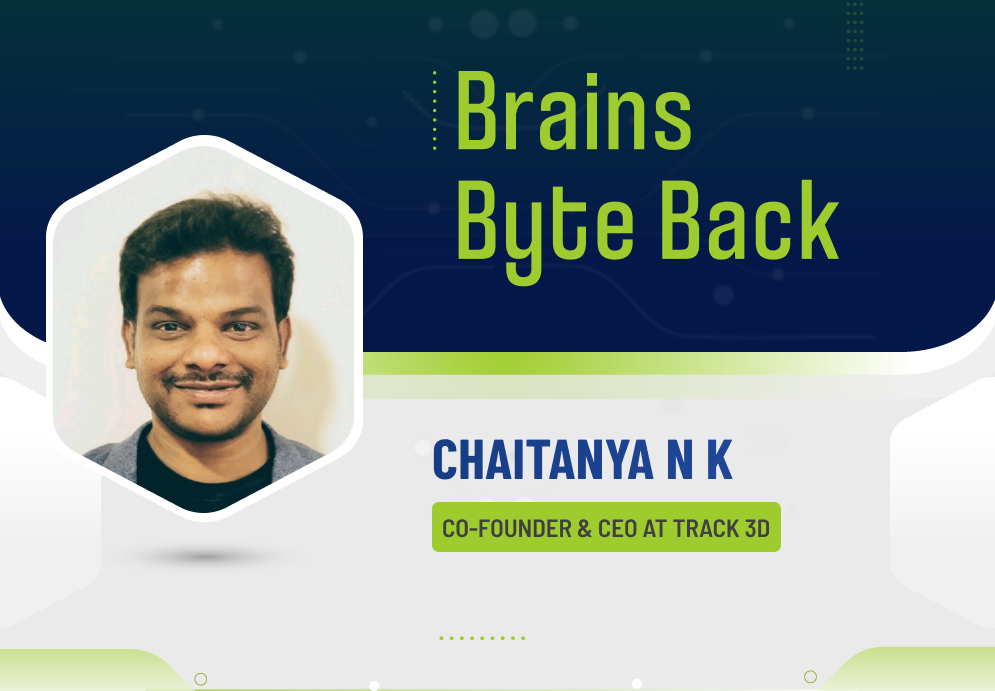
Disclosure: This article mentions a client of an Espacio portfolio company.
